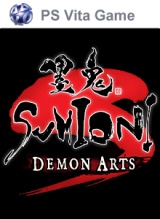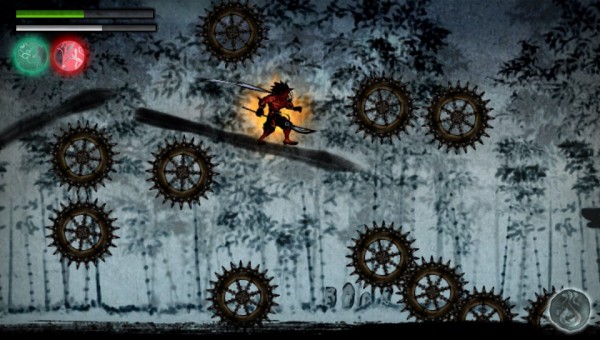One of the problems with developing games for a small touch screen is the obfuscation of the screen during interaction. Our dexterous, fat fingers are best suited for action around the periphery of the screen, and throwing them into the mix on the center of the screen turns into a balancing act between receiving input and delivering output. The iPad’s 9.5 x 7.5 inch screen divides screen activities well. The PlayStation Vita’s 5 inch OLED screen, so far, has not.
The issue is a middling one, but representative of the larger issue of missing the forest for the trees, as evident in Acquire and XSEED Games’ recent PS Vita exclusive, Sumioni: Demon Arts. Chubby phalanges aside, the game feels more like an artsy tech demo than a thoughtful marriage of input and reaction, and suffers most where it ought to succeed: the core mechanics of play. Assuming the role of a Japanese inkdemon (I know, stick with it) to paint brush strokes (a la Japanese ink wash painting style) into battle seems like an inspired idea. Hell, if Okami could do it with a Wiimote, why can’t Sumioni with the human finger?
The universal impression of Sumioni is its repetitive bias, which is to say insistence on it. The bottom-tier track of the game can be beaten within half an hour, and the ending is appropriately lame for the effort. Upon restarting the game, players find that achieving a better “score” (one to three stars) opens up a new path of levels with their own distinct endings. Score is determined, I think, by completion time and health lost. On some levels, the task is simple; others nearly impossible. The resulting flow will see gamers playing the same stages multiple times to get the desired score, and replaying initial levels to reach a different level track.
This would be no problem for a game with inspired enemies, varied stage design, and well-built platforming controls. Sumioni has none of these. The 2D sidescrolling melee falls into a simple jump-slash rhythm during the first level and it stays there. Dodging enemy attacks and using ink swipes (created with finger swipes on the touch screen) to avoid spikes and traps ends up being the only challenge, formidable at times and unconscionable at others. Invoking some fire strokes (also with the touch screen) and drawing hourglasses to summon bird and lion allies provides the only other bit of interest. The well is shallow, and is drawn dry within minutes.
Controlling the inkdemon Agura proves as much a chore as plodding through the formulaic stages. Jump is controlled either by X or Up on the joystick (a decision that makes for plenty of mistaken leaps straight into danger), and a dash function is initiated by double tapping in a direction (with similar results). Using touch screen controls means freeing up a finger or two to cover the screen momentarily, simultaneously disabling the former function of that finger and creating a world of momentary uncertainty beneath the floating finger. About the only control that feels precisely executed is the ability to refill the “ink gauge” (needed to draw platforms, fire brush strokes, hourglasses) by rubbing the rear touch pad.
The shame about Sumioni is that using the touch pad to draw interactive shapes seems like a stroke of genius, and if its execution offered more variance to levels, enemies, bosses, and mechanics, and if the level progression didn’t retread tired ground, and if the controls weren’t so finicky, then there’d be something redeemable to the inkdemon experience. Essentially, I’m saying if Sumioni were a different game entirely, Sumioni would have a chance at greatness. As it is, Sumioni is, sadly, Sumioni.



















